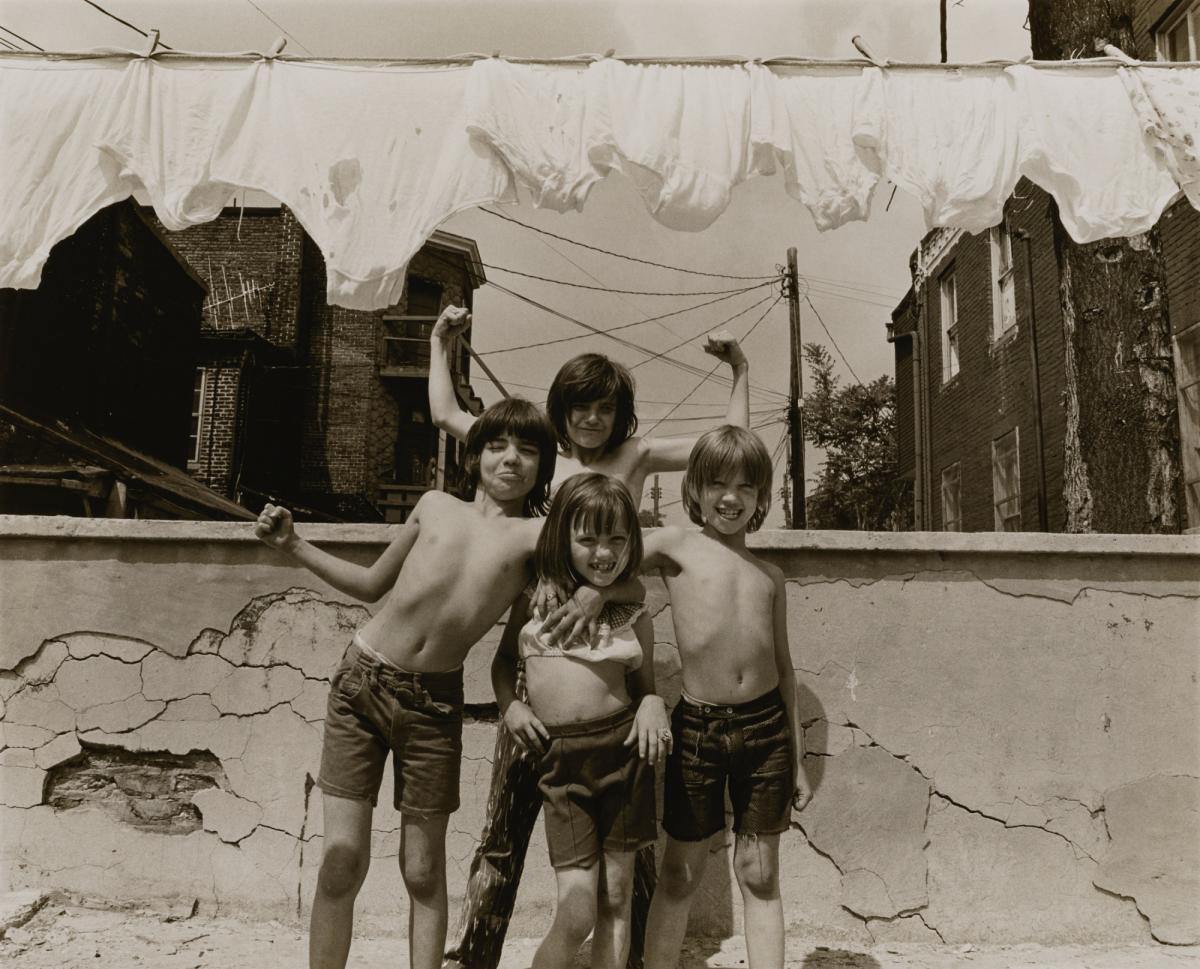
This week, SAAM opens Welcome Home: A Portrait of East Baltimore, 1975–1980, a close exploration of one resilient community as seen through the lens of three women photographers.
In 1976, to celebrate the bicentennial of the country’s founding, the National Endowment for the Arts (NEA) launched a multi-year program of photography surveys in communities across the United States. These surveys created a new visual record of a changing nation. Of the more than seventy projects funded by the NEA, the East Baltimore Survey was unique for having been conceived, led, and carried out by women photographers—Elinor Cahn, Joan Clark Netherwood, and Linda Rich. With significant support from the community, it was also one of the most highly acclaimed at a national level.
To capture the neighborhood of East Baltimore that, according to Rich at the start of the project, “continues to grow and change, preserving its culture, integrity, and humanity,” Rich, Netherwood, and Cahn immersed themselves in the community. They approached local clergy and were invited to attend bingo luncheons, exercise classes, first communions, and sauerbraten suppers. In time, they were welcomed into the homes and private lives of members of the neighborhood. They photographed a cross-section of its residences and businesses, celebrating its traditions while also acknowledging its many challenges. The three photographers worked on the project for more than five years, during which time they made more than ten thousand exposures.
“When we think of Baltimore, we think of a city that looks different from the Baltimore in these photographs,” says John Jacob, the McEvoy Family Curator for Photography, “and that’s in part due to the historical background of who lived in Baltimore at that moment.” The pull between the ethnic identities of the neighborhood’s largely immigrant residents—primarily Eastern European— and the community’s efforts to embrace “Americanness” was a sustained theme of the survey. Additionally, the photographs record how the residents fought for their community’s survival, insisting on basic social services and defending against efforts to divide it politically or economically.
While talking with John Jacob about plans for the exhibition shortly before her death, Joan Netherwood recovered a complete “community exhibition” of the East Baltimore Survey in her files. These small-scale exhibitions were “trust-raising” events in a community renowned for its suspicion of outsiders. The thirty recovered prints were donated by Netherwood to SAAM, and are featured in Welcome Home.
The exhibition is the first time the East Baltimore Survey photographs are being shown at SAAM. The East Baltimore Survey is one of thirteen complete photography surveys that were transferred from the National Endowment for the Arts to the Smithsonian American Art Museum in 1983. In 2016, the museum presented a selection of photographs from another of these surveys, the Kansas Documentary Survey from 1974 that was a model for the later projects, in the exhibition No Mountains in the Way. The surveys are a record of a particular American place, that when combined, create a national portrait.
See a selection of photographs from Welcome Home: A Portrait of East Baltimore, 1975–1980 in the online gallery.




















